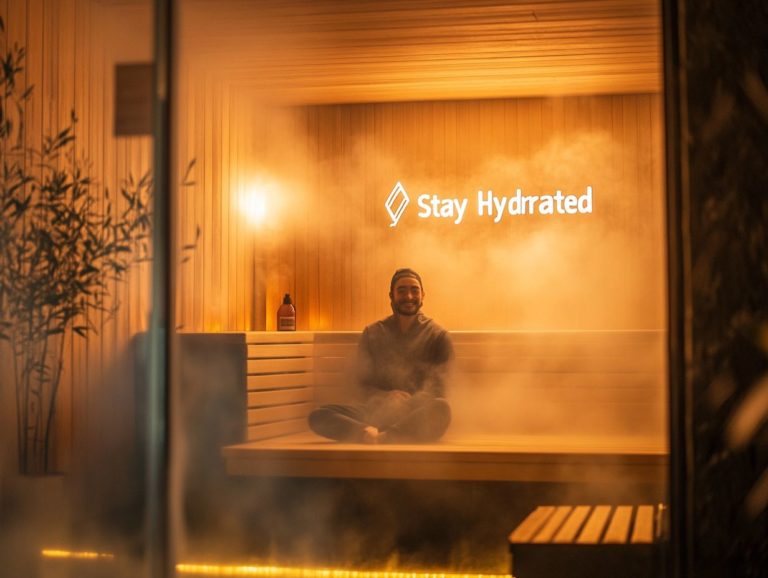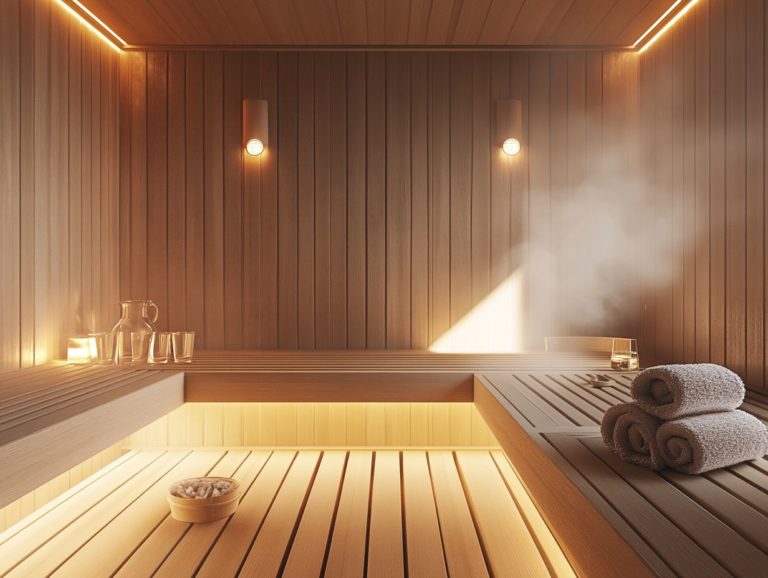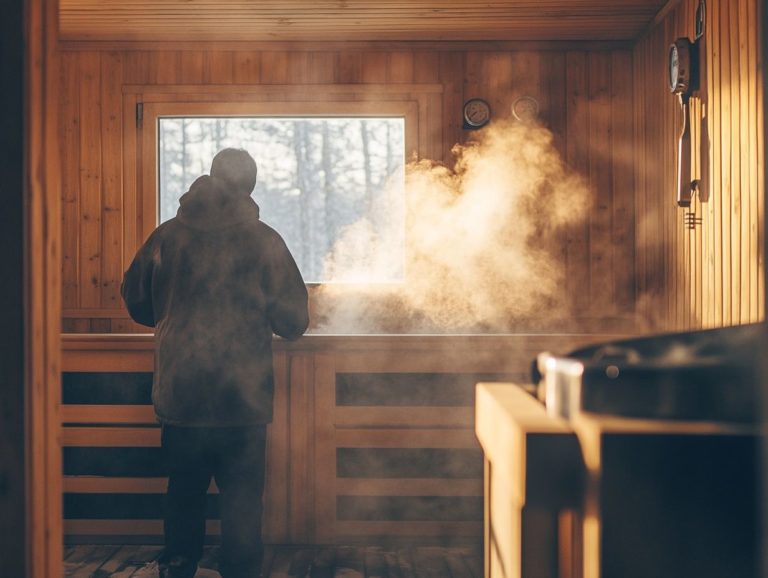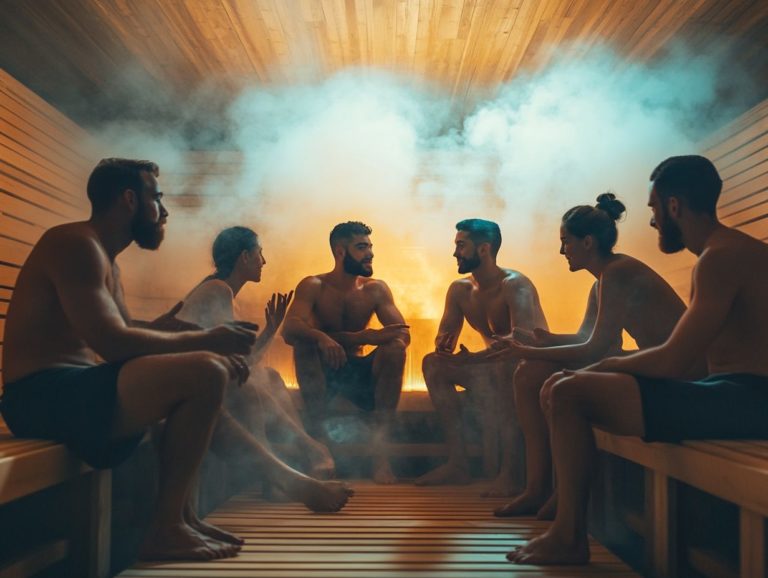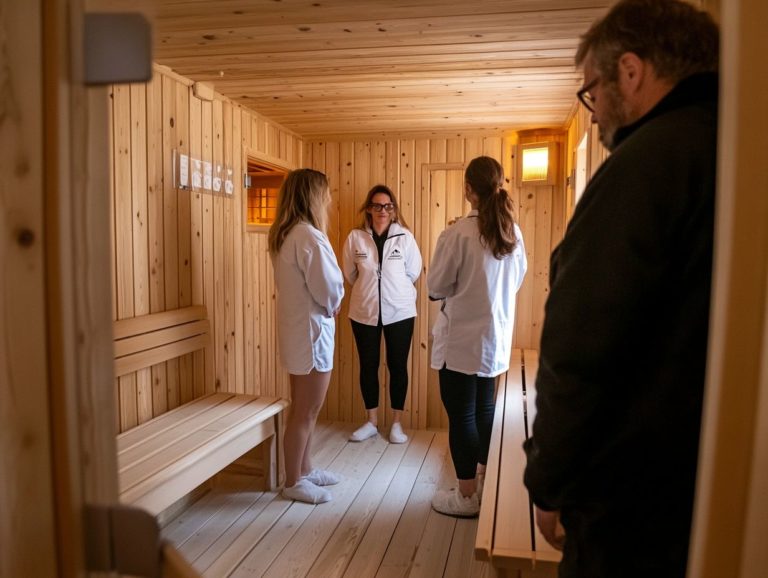Sauna Safety: The Impact of Cultural Differences
Saunas have long been revered across diverse cultures, not merely as spaces for relaxation but as vibrant hubs for social interaction, health, and wellness. They embody the essence of ancient practices that promote well-being.
This exploration delves into the captivating history of saunas, tracing their origins and cultural significance throughout various regions of the world, particularly in Finnish culture and the sauna traditions that have developed over time.
You ll discover essential safety considerations, a comparison of traditional versus modern practices, and best practices to ensure a safe sauna experience.
Get ready to dive into the fascinating world of saunas as we reveal how cultural beliefs inform your understanding of sauna safety and enjoyment.
Contents
- Key Takeaways:
- The History and Cultural Significance of Saunas
- Sauna Safety: Understanding the Risks
- Comparing Sauna Practices Across Cultures
- Best Practices for Sauna Use
- The Role of Cultural Differences in Sauna Safety
- Frequently Asked Questions
- What is the impact of cultural differences on sauna safety?
- Are there any specific cultural practices that affect sauna safety?
- How can cultural differences impact proper sauna etiquette?
- What safety precautions should be taken when using a sauna in a different culture?
- Are there any cultural taboos to be aware of when using a sauna?
- How can cultural sensitivity promote sauna safety?
Key Takeaways:
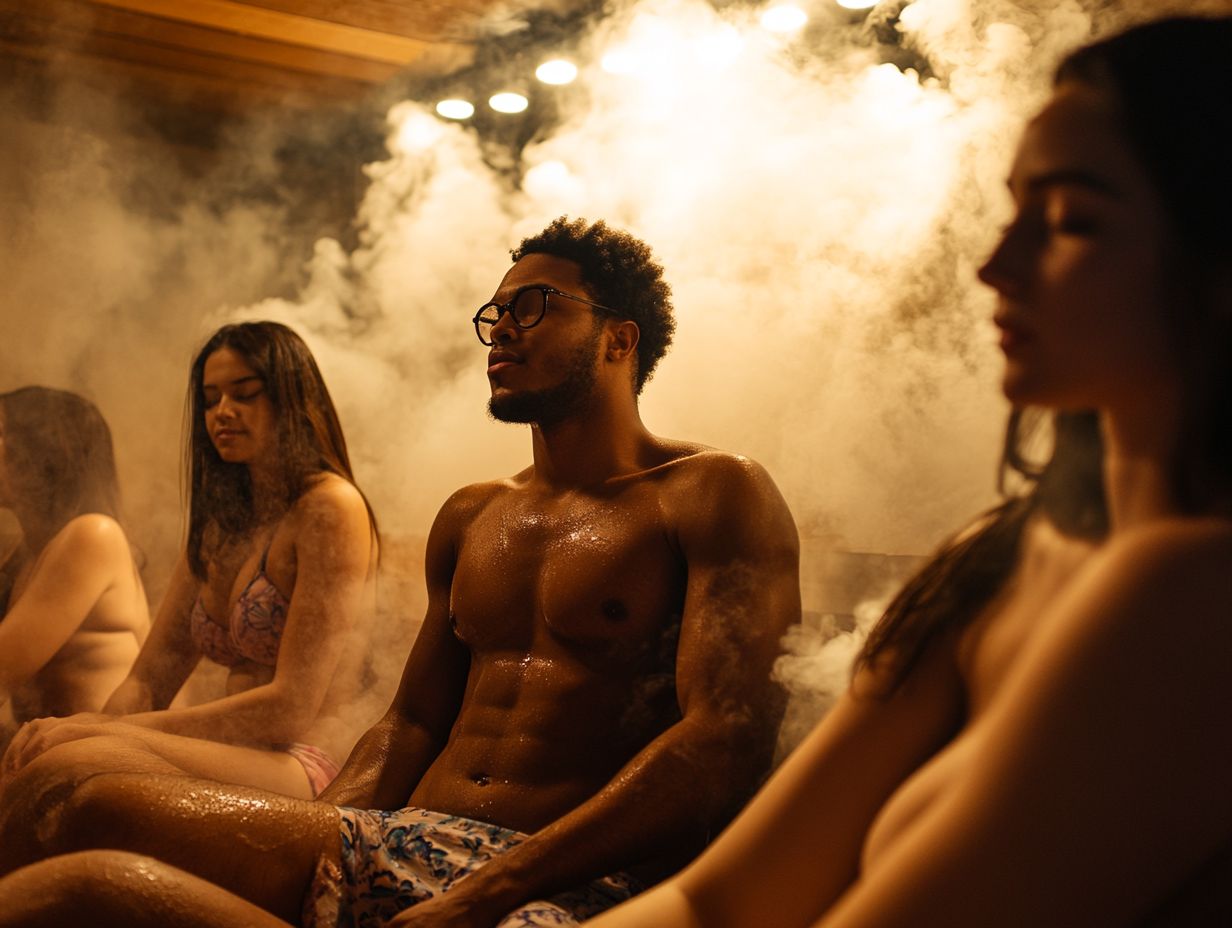
- Cultural differences play a significant role in sauna safety, as beliefs and practices can impact how individuals approach and use saunas.
- Understanding potential hazards and taking necessary precautions is crucial for safe sauna use, regardless of cultural background.
- From traditional to modern methods, cultural differences influence the way saunas are practiced. It’s important to respect and adapt to these variations for a safe and enjoyable experience.
The History and Cultural Significance of Saunas
The history and cultural significance of saunas span thousands of years, deeply embedded in the ancient traditions of various cultures, particularly in Finland. Here, the sauna transcends mere relaxation; it stands as an essential pillar of Finnish identity and heritage.
Whether you find yourself in a bustling public sauna, where community gatherings come to life, or indulging in a serene private sauna experience at a summer cottage, these wellness sanctuaries have evolved significantly. They offer profound health benefits and encapsulate the essence of sauna rituals.
Rituals such as steam and the use of birch twigs for cleansing the skin and promoting detoxification are integral parts of the sauna experience.
Origins of Saunas in Different Cultures
Saunas boast a rich tapestry of origins woven through various cultures, with the Finnish sauna standing out as a cherished tradition. However, other cultures offer unique wellness practices, such as Native American sweat lodges, Japanese onsens, and Roman steam baths, each adding distinctive layers to the global sauna experience.
The Finnish sauna is often regarded as a sacred haven for relaxation and socialization, where communal experiences and the beauty of nature come together. In contrast, Native American sweat lodges center around purification and spiritual renewal, employing heated stones and aromatic herbs to elevate the experience.
Meanwhile, Japanese onsens embrace geothermal springs within their bathing rituals, promoting a sense of tranquility and healing. Roman steam baths crafted elaborate public spaces that catered not only to personal grooming but also to social interaction and showcased architectural brilliance.
These diverse practices do more than just promote physical health through detoxification and enhanced circulation; they cultivate a profound sense of community, reflecting the cultural values inherent to their origins.
Sauna Safety: Understanding the Risks
Understanding sauna safety is essential for maximizing the health benefits while minimizing any potential risks that come with sauna use. This becomes particularly important in public sauna settings, where adhering to proper etiquette is key to ensuring a safe and enjoyable experience for everyone involved.
Potential Hazards and Precautions
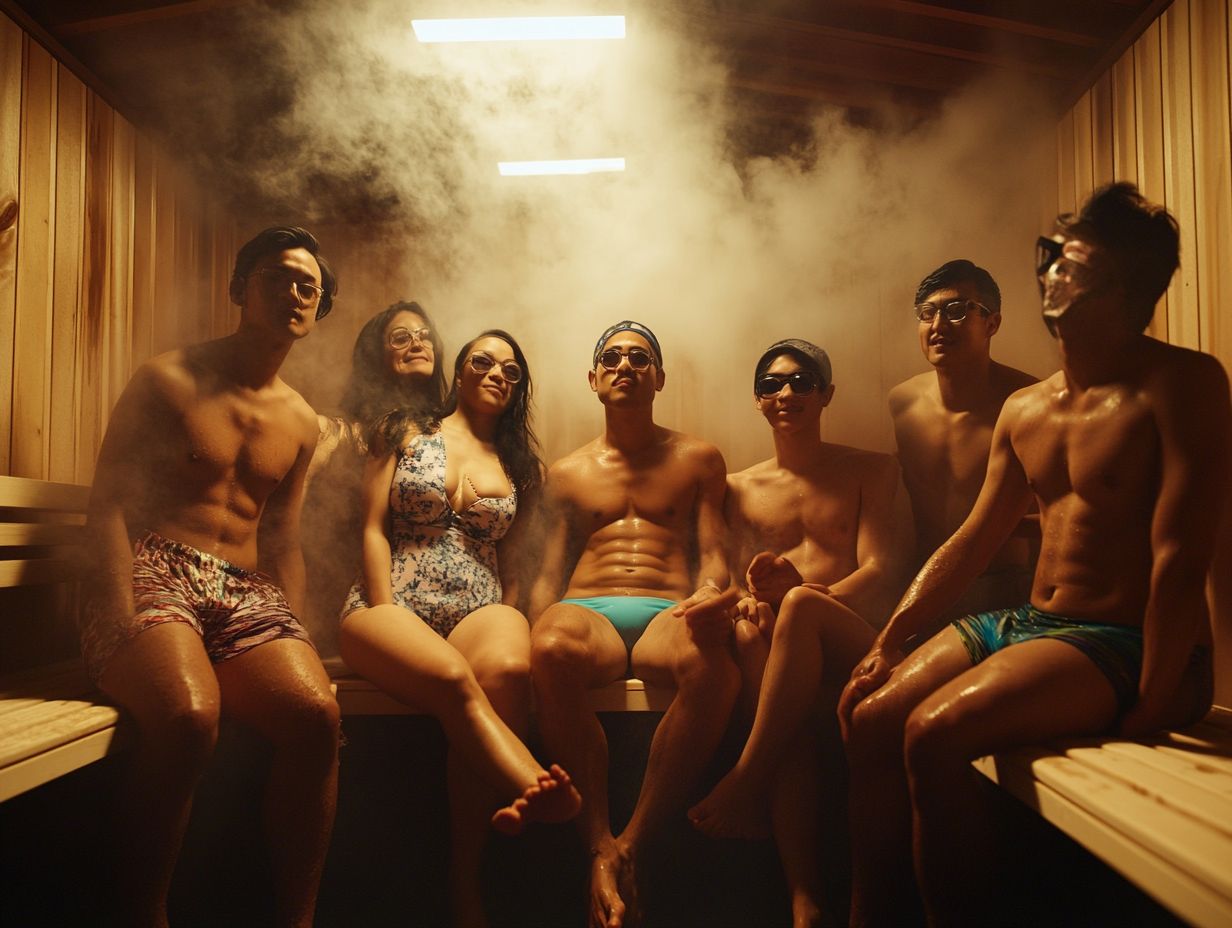
Using a sauna can lead to dehydration and overheating, which are serious health risks. Follow safety precautions and sauna etiquette closely.
Keep track of your time inside. Prolonged exposure increases risks, so stay hydrated with water or electrolyte-rich drinks before and after your session.
Monitor the sauna’s temperature; it should be between 150 F and 195 F. If you have health concerns, like heart issues, check with a healthcare professional before entering.
Remember to cool down between sauna sessions. This practice enhances safety and makes your experience more enjoyable.
Comparing Sauna Practices Across Cultures
Diving into sauna practices from different cultures reveals fascinating contrasts and similarities. For example, the traditional Finnish sauna is known for its steam and private changing rooms that create a friendly environment.
In contrast, Native American sweat lodges promote a communal experience, while Japanese onsens provide a peaceful retreat.
Each unique ritual highlights the focus on health and the sense of community they create.
Traditional vs. Modern Sauna Methods
Traditional sauna methods are rich in cultural rituals, while modern options like infrared saunas offer new thermal therapy choices for today s wellness needs.
Understanding these differences is vital if you re exploring ways to relax and improve your health. Finnish saunas typically feature high heat and humidity, promoting sweating and social interaction.
Infrared saunas use advanced technology to emit light that warms the body directly. This allows you to enjoy therapeutic effects at lower temperatures.
This difference shapes your experience and influences the specific health benefits ranging from muscle recovery to improved mental well-being making sauna culture relevant to modern lifestyles.
Best Practices for Sauna Use
Implementing best practices for sauna use can elevate your experience. Focus on relaxation, safety, and the health benefits of regular sauna sessions.
Tips for Safe and Enjoyable Sauna Sessions
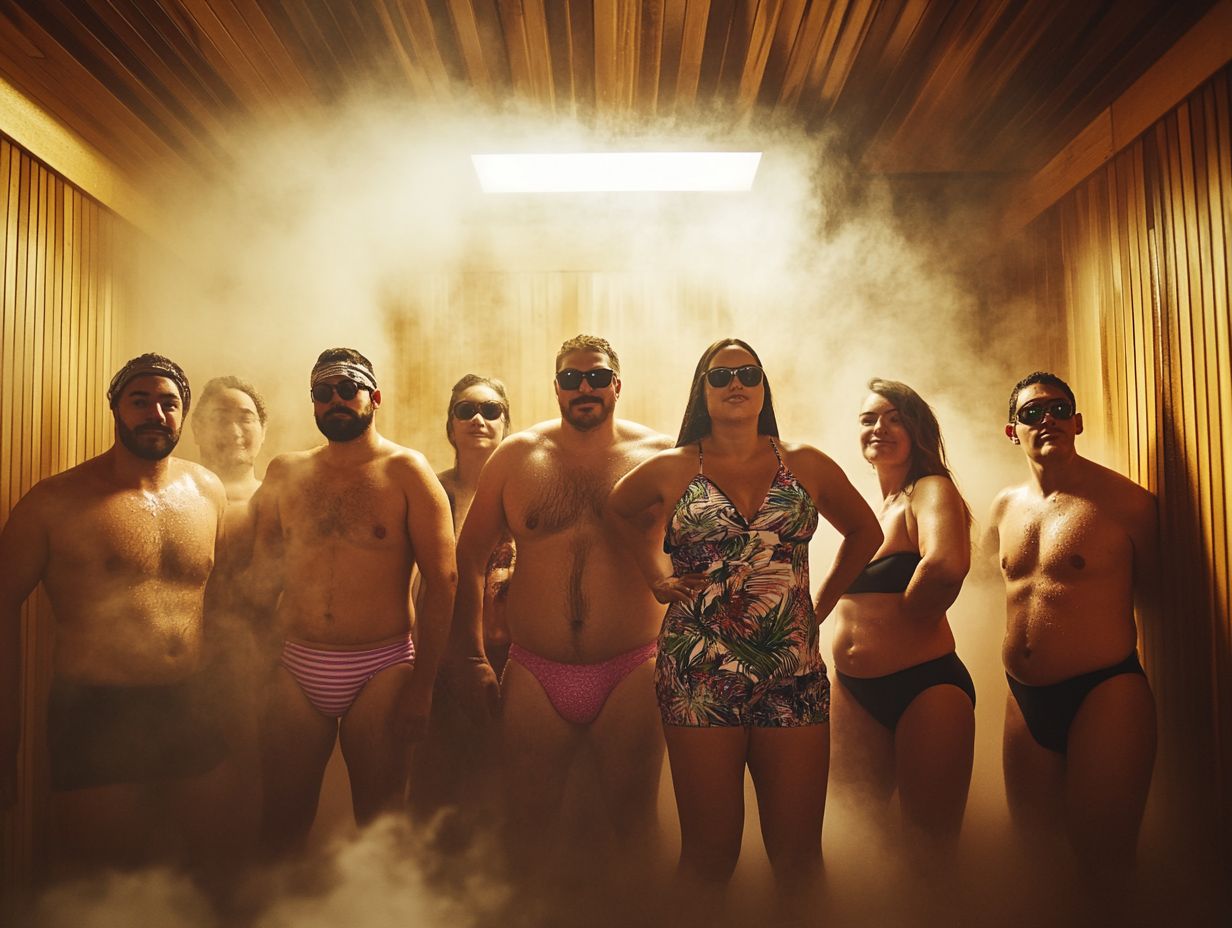
To make your sauna sessions safe and enjoyable, embrace a few key tips. Prioritize hydration, understand sauna etiquette, and practice relaxation techniques.
When joining communal sauna gatherings, keep hydration at the forefront. Drink plenty of water before and after, as heat can cause fluid loss.
Wear breathable attire that keeps you comfortable and respects the space. Engage in relaxation exercises such as mindful breathing or gentle stretches to enhance the soothing effects of the heat.
Good manners matter too. Share the space amicably and be considerate of noise levels, allowing everyone to fully enjoy the benefits of this timeless wellness tradition.
The Role of Cultural Differences in Sauna Safety
Cultural differences significantly shape sauna safety. Diverse traditions and etiquette surrounding sauna use influence how individuals behave and perceive risk. This affects the health benefits one can derive from this ancient wellness practice.
Understanding these nuances is essential for appreciating the sauna experience. It helps maximize the advantages, ensuring you enjoy the full range of benefits associated with sauna practices.
How Cultural Beliefs and Practices Affect Sauna Safety
Cultural beliefs and practices play a significant role in shaping sauna safety protocols. They influence how you perceive risks and adhere to practices that prioritize health and wellness.
For example, in Nordic cultures, the sauna is essential for both physical and mental health. This perspective highlights the importance of post-sauna cooling rituals, like snow bathing or cold plunges, which enhance circulation and build resilience.
Conversely, some Asian cultures may hold misconceptions about heat exposure. This leads to a more cautious approach that emphasizes gradually getting used to the heat to mitigate potential health risks.
These diverse viewpoints shed light on different approaches to heat tolerance how well someone can handle heat and hydration. They also reflect deeper social values related to community and self-care. Understanding these cultural nuances paves the way for more effective health recommendations on a global scale.
Frequently Asked Questions
What is the impact of cultural differences on sauna safety?

Cultural differences greatly impact sauna safety. Different cultures have varying beliefs and practices regarding sauna use, affecting individual approaches to safety and resulting in different hazards.
Are there any specific cultural practices that affect sauna safety?
Yes, certain cultural practices impact sauna safety. For instance, some cultures pour water on sauna rocks to create steam, while others do not. This affects humidity levels and poses safety risks.
How can cultural differences impact proper sauna etiquette?
Cultural differences influence sauna etiquette, such as appropriate clothing to wear or towel use. Some cultures may find it disrespectful to wear clothing in the sauna, while others may require it for modesty. This can lead to confusion and potential etiquette breaches.
What safety precautions should be taken when using a sauna in a different culture?
Research and understand the cultural practices and beliefs surrounding sauna use before entering one in a different culture. This knowledge helps you follow proper safety precautions and avoid unintentional hazards.
Are there any cultural taboos to be aware of when using a sauna?
Yes, certain cultural taboos may exist regarding sauna use, such as using the sauna at specific times or on certain days. Being aware of these taboos helps avoid misunderstandings or conflicts.
How can cultural sensitivity promote sauna safety?
Cultural sensitivity is crucial in promoting sauna safety. It allows individuals to understand and respect the cultural differences affecting sauna use. By being culturally sensitive, you can avoid unintentional hazards and promote a safe and respectful sauna experience for all.
We encourage you to share your experiences or seek more information about sauna practices. Your insights can help foster a safer and more enjoyable sauna culture.

